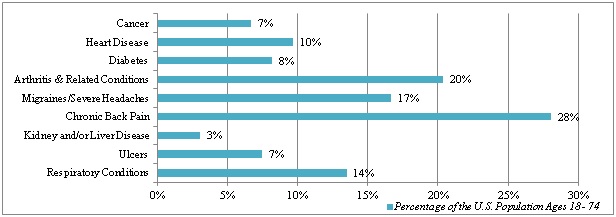Last spring I wrote a series exploring the connection between positive thinking and healing. It is true that positive thinking isn’t a reliable cure for illness; however, there are huge emotional benefits that come from training yourself to find the bright side in any situation. If you are ready to step into the light…come with me…
The Challenge
When your health goes south, a wave of fear, frustration, anger and sadness can overtake you. Experiencing something over which you have no control is unsettling.  The paradox of trying to be positive when you’re coping with illness is that your reality appears far from sunny. How do you “look on the bright side” when there does not appear to be a “bright side?”
The paradox of trying to be positive when you’re coping with illness is that your reality appears far from sunny. How do you “look on the bright side” when there does not appear to be a “bright side?”
The internet provides a new instantaneous vehicle to feed health fears. One simple search can turn up a horrific number of symptoms, diagnosis and personal tragedies to keep you in bed for a month. As you search to discover what your future may hold, questions of “why” and “how” swirl around keeping you up at night.
First, just your body was out of control. Now, it also seems like you are no longer in command of your thoughts.
This guide is about taking back control. Your diagnosis, aches, pains and trips to the doctor may rattle your spirit, but they don’t have to break it. You still have control over your attitude.
You Are Not Alone
Illness can bring a profound feeling of isolation. Suddenly, there is a stark contrast to your daily routine and the freedom other people seem to have. The secret is that everyone faces challenges. Most people just don’t share them openly.
People of all ages are traveling a journey similar to yours at this very moment. Currently, America is facing disease in epidemic proportions. Stress levels are on the rise and our health is showing the effects of it. The following table gives the percentage of the U.S. population managing one or more of the health conditions listed.1
In all, 133 million Americans — 45 percent of the population — have at least one chronic disease, and that number is on the rise.2
Why so much distress? Fast-paced lifestyles and the current economic downturn have put stress on the rise. The majority of Americans have moderate to high levels of stress. Additionally, people who have health challenges consistently experience more stress than people to perceive themselves to be in good health.
The huge downside to stress is that it can take an additional toll on your body. People report a myriad of symptoms relating to stress which include3:
It’s estimated that between 60 and 90 percent of all doctor visits are related to stress.4 Clearly, getting a handle on stress is key to improving health.
While 64 percent of us recognize that managing stress is important, only half that amount, 32 percent, are doing well at stress management.3 Excessive stress is causing us to over eat, over TV and under exercise. The kicker is that, in most situations, stress is not an external threat. Stress is closely related to how you perceive your world; in essence how positive you are about your life.
Commit to the Benefits
Developing a positive attitude is a powerful medicine-free way to reduce your stress level and improve your health. The benefits of a positive outlook include:
- Improved immune system
- Shortened healing time
- Reduced levels of depression
- Decreased blood pressure
- Extended lifespan
- Reduced stress hormones
- Decreased inflammation
- Better coping skills
- Decreased pain
- Increased focus and energy
I know that when you don’t feel well and you’re stressed, it can be difficult to muster the willpower to change. Have faith in yourself and believe in the peace and freedom that lies before you. It’s time to commit to yourself, and to your health, to improve your life.
Authenticity
I’m certainly not implying that if money is tight and you don’t feel well, you should just pretend that everything is great. That is the traditional approach to positivity. Trying to force yourself to see the bright side can end up stressing you out even more. True positivity comes from being authentic and honest with yourself. It is from this perspective that developing a positive attitude becomes attainable.
5 Steps to Find the Bright Side
Step 1: Witness It
There is a voice inside your mind that narrates life for you. You know this voice intimately. It usually provides pithy commentary about your experiences, but also may criticize you and whisper worry about your future. To put it bluntly, you would probably disown any “friend” who spoke to you the way your inner voice does.
The first step in developing a positive attitude is to watch your inner self-talk. Simply observe what you are saying about yourself and your life. Notice how it makes you feel and the actions you take based on your internal conversations.
This is not the time to begin judging yourself for being negative. Be compassionate. Silently witness how you run your thoughts and your life. A picture of your current attitude will emerge. Perhaps you tend to. . .
- Imagine the worst-case scenario – “It has to be terminal, I just know it.”
- Worry about how others see you – “They probably think I’m a drama queen.”
- Judge yourself – “I’m not good enough.”
- See life as hard – “Why can’t things ever go my way.”
To change anything, you must first know what it is that you want to change.
Step 2: Affirm Truth
 After you observe your self-talk for a while, you will notice that much of what you tell yourself is not true. It is worry, speculation, assumption and drama. Step 2 is about getting back to the facts.
After you observe your self-talk for a while, you will notice that much of what you tell yourself is not true. It is worry, speculation, assumption and drama. Step 2 is about getting back to the facts.
A few times each day, as you listen to your inner dialogue, ask yourself if what you’re saying is true. Are you certain that your assumptions, worries and judgments are facts? If they are untrue, what is the truth? For instance, if you don’t feel well and you hear yourself say, “I will never feel better again!” You don’t know that this statement is true because it’s an assumption about tomorrow. The truth would be, “I don’t feel well today. I don’t know how I will feel tomorrow.”
Once you have practiced adjusting your self-talk to what is true, begin to deliberately talk to yourself about the good things you recognize in your life. Affirm what you value and that for which you are grateful. This isn’t about making grandiose, flowery statements that you are a “beacon of vitality and energy,” you’ll spot that lie from a mile away. This is about consciously deciding what is good that also feels true.
Okay, so maybe you’re health isn’t great, but you could affirm:
- I am talented at…
- I am loved by…
- I enjoy…
- I choose to be kind to myself.
- I have the potential for healing.
- I am willing to recognize the positive in life.
This will take some effort at first, but after a while, you will notice that your internal dialogue will effortlessly sound much more positive.
Step 3: Narrate Meaning
Step 3 is the most important of the 5 steps. The meaning you assign to your health challenges is a vital piece of the puzzle that makes up your attitude. Feeling cursed, unlucky or unfairly burdened by your health leads to a more negative attitude. On the other hand, seeing your health as a challenge, or even — dare I say — an opportunity to discover what’s important in life, leads to more positive attitude.
The wonderful thing about meaning is that you are the one who gets to narrate it. You are the storyteller of your life. Of course, your spiritual beliefs and background may influence your view, but ultimately you determine the significance and purpose of your health struggles.
It’s futile to be mad that the sky is blue because, well, the sky is blue. Similarly, becoming angry because you are sick only makes you angry; it does not make you well. The goal with finding meaning is to consent to your reality by accepting and welcoming its presence. There are many ways you can narrate the meaning of your health. They include:
- Writing about your health challenges. Consider writing the answers to these questions:

- What is the purpose of my illness?
- What can I learn from this period in my life?
- What is important to me?
- What greater good could come out of this?
- For more journaling topics, visit: http://www.creativeaffirmations.com/affirmation-letter.html
- Talk to someone — a family member, friend, therapist or spiritual advisor — to process your experiences.
- Spend some quiet time reflecting on your life.
- Pray. This can be especially helpful for letting go of the things over which you don’t have control.
- Read. Other people’s stories and the meaning they have found through their illnesses may inspire you. You can find lots of book reviews at: http://www.creativeaffirmations.com/inspirational-books.html
Step 4: Develop Support
Asking for help does not come naturally to most people. It is a skill you can learn and practice. As you live with new challenges each day, you’ll discover what you have the capacity for and what you need assistance with. Your energy level is one of the first things to go when your body becomes ill. This diminishes the amount you can accomplish in a day. Look over your responsibilities and determine what you can delegate to a spouse, an older child or a housecleaning service.
You are of no less value because you cannot do as much as you used to. Illness has a way of weeding out what is not essential. It is okay to simplify. There is grace in knowing what is important and what you can do without.
In addition to getting support for everyday tasks, you also need emotional support. Reach out to friends, family or a professional who can listen and help you process the transition you are making.
Lastly, there are a number of books, websites and audio courses that can help support you through your illness. Though I am partial to Chronic Resilience: 10 Sanity-Saving Strategies for Women Coping with the Stress of Illness, there are other helpful resources…I guess. 😉
It is okay to share the weight of your situation with your support circle. They want to be there for you.
Step 5: Spoil Yourself
One of the benefits to illness is that it gives you permission and inherent motivation to take great care of yourself. Now is the time to eat nutritiously, take walks, get a good night’s sleep and for heaven’s sake, breathe. Illness is the body’s way of saying it needs a break. In order to heal, you must rest. Your health is now the priority. Here are some ways to take excellent care of yourself:
- Get a massage.
- Listen to music.
- Practice deep breathing.
- Learn to meditate.
- Find healthy recipes for your favorite foods.
- Watch funny movies.
- Search the internet for how to get well (as opposed to how you will become sicker.)
- Take a walk or sit in nature.
- Treat yourself with a bubble bath.
- Put flowers in the house.
- Take up a new hobby.
- Exercise: dance, yoga, bicycle, kayak, ski, stretch or anything else that gets you moving.
You may not feel motivated to meditate or eat healthy. Sometimes we just have to do it anyway. Having the discipline to put the above into action is vital to improving your mood.
Lastly, it’s especially important to spoil yourself after any doctor’s appointment or medical test. You were brave, calm and strong. You deserve something that makes you smile. Cupcake anyone? Make mine vegan.

